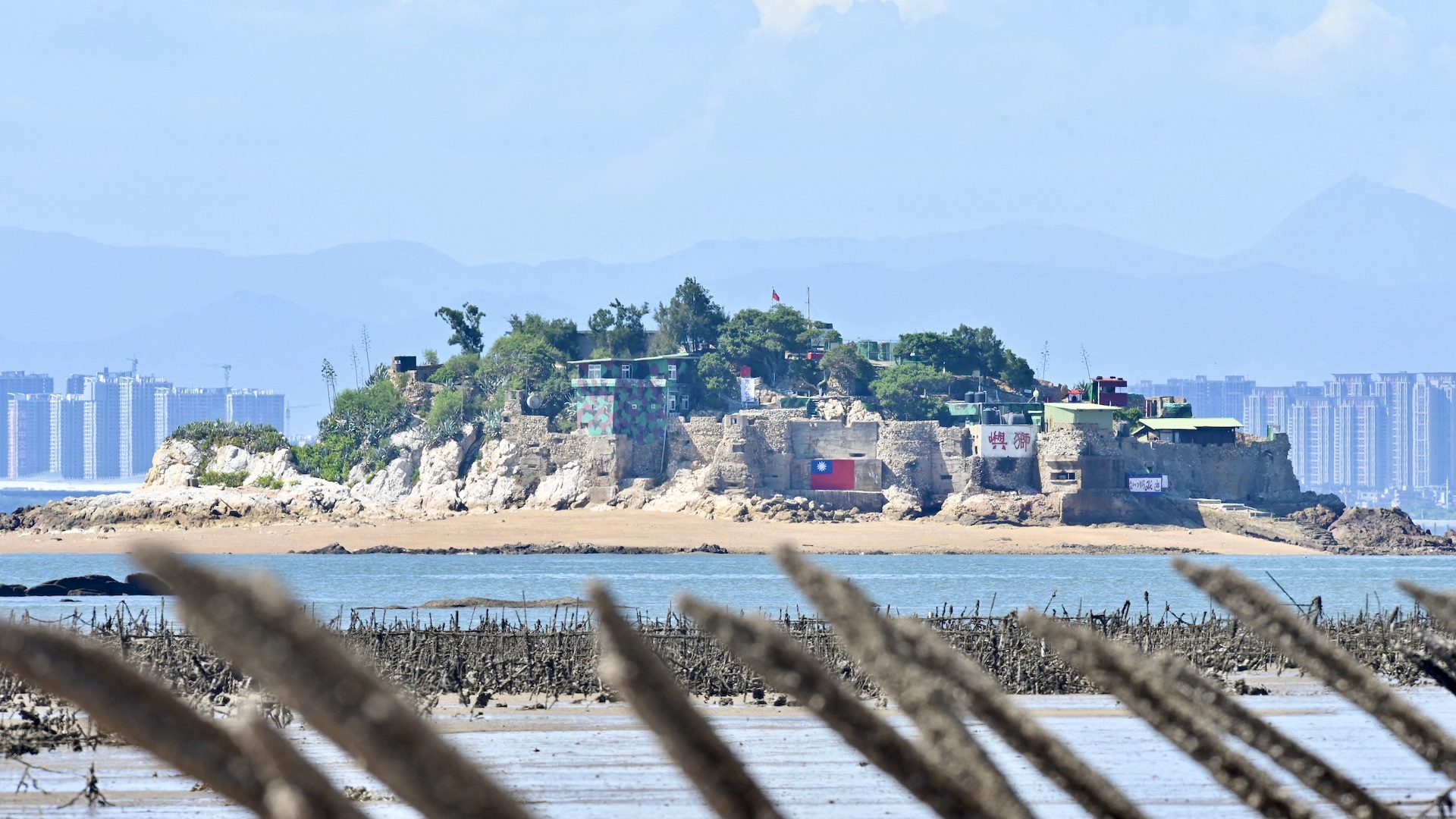Details remain limited but the Taiwanese military announced earlier today that it shot down what it described as an unidentified civilian drone flying in restricted airspace near Shihyu islet. This is one of a number of islands that make up the Taiwanese-controlled Kinmen County, also known as Quemoy, which is situated extremely close to the Chinese mainland on the opposite side of the Taiwan Strait from Taiwan proper. Just days ago, Taiwanese authorities announced that they would begin shooting down any drones that violated their airspace and did not respond to warnings.
A press release from Taiwan’s Ministry of National Defense says that the drone in question was brought down over the water close to Shihyu, which is less than 3 miles away from Xiamen Island in the People’s Republic of China, at around 12:30 PM local time. Troops on the islet had first tried, unsuccessfully, to drive it off with warning flares. The statement added that the drone was carrying a camera of some kind.
At the time of writing, authorities in Taiwan do not appear to have provided any insight into what kind of unmanned aircraft this was, where it originated from, who the operator was, what weapon or weapons were employed to knock it out of the sky, and whether any part of it was subsequently recovered.
This is the first known shootdown of a drone in airspace under Taiwanese control, though it is not the first attempt to do so. Taiwanese military officials in Kinmen announced that troops had attempted to bring down another unmanned aircraft flying over Erdan Island on Tuesday, but that it had been able to retreat in the direction of Xiamen. On Wednesday, drones were spotted over Kinmen’s Lieyu, Dadan, and Caoyu islands, and again flew in the direction of Xiamen after Taiwanese forces fired flares at them.
By all indications, drones likely originating from the mainland flying over or near areas within Kinmen County is not new. They have certainly garnered greater attention since a video shot earlier in August from one of these drones, which showed Taiwanese troops throwing rocks at it, emerged on social media last week.

Just days later, Taiwanese authorities subsequently announced plans to deploy unspecified counter-drone systems on outlying islands it controls, including Kinmen, as well as their intention to begin shooting down any unmanned aircraft that did not respond to warnings to leave Taiwanese-controlled airspace.
“I want to tell everyone that the more the enemy provokes, the more calm we must be,” Taiwan’s President Tsai Ing Wen said while addressing naval officers during a visit to Penghu County, another set of Taiwanese-controlled islands in the Taiwan Strait, on Tuesday. “We will not provoke disputes, and we will exercise self-restraint, but it does not mean that we will not counter.”
She also promised “necessary and strong countermeasures” to defend Taiwan’s airspace, but did not elaborate on what those would be.
Taiwanese Maj. Gen. Lin Wen Huang, head of operations and planning at the Ministry of National Defense, further reiterated Taiwan’s right to self-defense yesterday. “For PLA [People’s Liberation Army] aircraft and warships that entered our territorial sea and airspace within 12 nautical miles, our armed forces will exercise the right to self-defense and counterattack,” he said.
For its part, the Chinese government has denied being directly involved in any of these incidents, but has left open the possibility that private nationals are responsible. When asked about the situation earlier this week, Chinese Foreign Ministry spokesperson Zhao Lijian had responded by saying “Chinese drones flying over China’s territory – what’s there to be surprised at?” The government in Beijing views Taiwan as a rogue province.
Drones flown by ostensibly private Chinese nationals, who may or may be operating based on some level of direction or prompting from the country’s government, are exactly the kind of so-called ‘gray zone‘ tactics that Taiwan’s President Tsai also criticized during her recent visit to Penghu. She highlighted how these purportedly independent activities could still be used to probe air defenses or provoke incidents that could be used as a pretext for escalation. The term ‘gray zone’ encompasses a wide variety of activities short of traditional military action, often carried out by ostensibly independent actors, which has also previously been referred to as ‘hybrid warfare.’
The War Zone has highlighted these exact same kinds of concerns as part of larger discussions about the threats that drones present now. This includes the dangers posed by even smaller commercial available types, which state and non-state actors alike have demonstrated are not only capable of carrying out surveillance and reconnaissance activities, but are suitable platforms for carrying improved munitions.
These threats are only likely to increase as time goes on, especially with regard to Taiwan. For instance, U.S. military-sponsored wargaming has now repeatedly underscored the likelihood of drone swarms with high degrees of autonomy being a decisive factor in the defense of Taiwan against a Chinese intervention. The Chinese government, which has become a particularly prolific investor in unmanned capabilities of various kinds, is pushing ahead with the development of its own swarming capabilities, too.
In any future Taiwan Strait conflict where Chinese forces attempt to actually seize Taiwanese territory, those efforts are almost certain to be focused first on outlying areas like Kinmen, too.
All of this, of course, comes during a surge of geopolitical friction between Taiwan and mainland China following a visit to the self-governing island by U.S. Speaker of the House Nancy Pelosi last month. China responded to that by encircling Taiwan with snap exercises for days and sending dozens of warplanes into the island’s Air Defense Identification Zone (ADIZ).
All told, it remains to be seen how the situation in the skies around Kinmen, and any of Taiwan’s other outlying islands, will continue to evolve now that Taiwanese forces have demonstrated a willingness to shoot down intruding drones.
Contact the author: oliver@thewarzone.com
